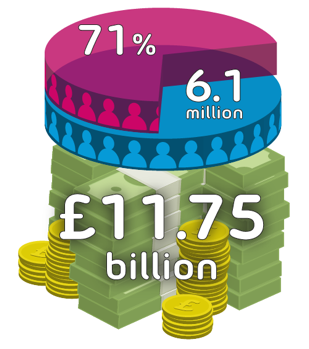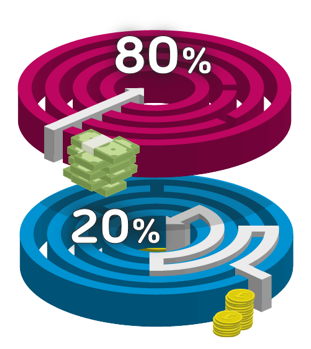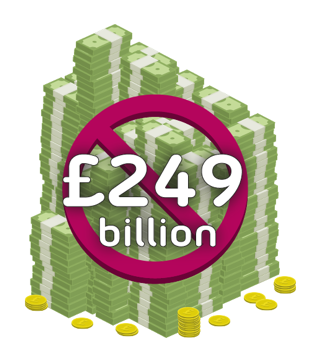The accessibility business case
 Why digital and physical accessibility add up for retailers
Why digital and physical accessibility add up for retailers
Our consultants here at System Concepts are big believers in the importance of social inclusion and accessibility. We also know that there’s no bigger driver of progress than the bottom line, and recent media coverage has highlighted the clear accessibility business case for retailers.
 ‘£11.75bn of business at stake’:
‘£11.75bn of business at stake’:
2016 Click-Away Pound survey
The 2016 Click-Away Pound survey estimated that UK retailers lose out on £11.75bn by ignoring needs of disabled shoppers online. Hot on the heels of the publication of this survey, the BBC published an article titled “Shops are ‘dumb’ for ignoring disabled customers”, highlighting the costs of poor physical accessibility on the high street.
Poor accessibility means lost business
Surveys and media coverage confirm what our experts have been observing for years: many businesses have a lot to do to establish the accessibility business case, and implement effective strategies.
Our consultants regularly conduct audits of both digital and physical sites (e.g. websites, mobile apps, offices, shops). Only a very small percentage of the businesses concerned provide sufficiently for the needs of customers with a disability. More surprisingly, these businesses do not seem to realise the scale of the corresponding financial loss.
The accessibility business case in numbers
Here are a few of the headline figures from the Click-Away Pound Survey and BBC article.
 |  |  |
| 71% of the 6.1 million internet users with access needs click away from an e-commerce website that they find difficult to use. This means they are likely to spend their £11.75 billion on more accessible competitors’ sites. | Over 80% of customers with access needs do their online shopping on the websites that pose the fewest barriers, rather than on the websites that offer the cheapest products. | High street retailers that are inaccessible to customers with a disability miss out on a huge £249 billion (the spending power of the disabled community in the UK). |
Retailers miss out
While the numbers alone are telling, there are wider reasons for retailers to improve accessibility.
Many customers without a disability experience similar barriers to the ones faced by disabled people. For example, parents with prams often can’t enter stores with narrow aisles, while older shoppers in particular can find websites with a poor level of accessibility unusable.
Customers with access needs may never give a website they struggle with a second chance. On the flip side, they’ll appreciate and proactively recommend the ones with a good level of accessibility.
It’s clear that many retailers, through inadequate digital and physical accessibility provision, are missing out on business – from disabled customers, but also from parents with prams, older people and others.
Why are many businesses failing the accessibility test?
While there are many factors that prevent organisations from adequately addressing accessibility, our specialists find the following ones to be the most crucial.
1. Unawareness
2. Variable organisational knowledge
3. Lack of education
Make your retail stores accessible – online and offline
If you recognise the missed revenue opportunities and barriers to accessibility described above as relevant to your retail operation, now’s the time to act.
Our experienced consultants will help you create and promote a clear accessibility business case, and prepare a commercially effective strategy covering both physical and digital accessibility needs.
 Why digital and physical accessibility add up for retailers
Why digital and physical accessibility add up for retailers ‘£11.75bn of business at stake’:
‘£11.75bn of business at stake’: